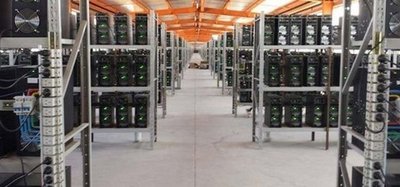In the ever-evolving landscape of cryptocurrency, the demand for sustainable and efficient mining solutions has never been more pronounced. Bitcoin mining, notoriously energy-intensive, is witnessing a transformative shift toward renewable mining systems. These systems champion green energy, drastically reducing carbon footprints while maintaining the computational power essential for validating blockchain transactions. When we talk about pricing such renewable Bitcoin mining rigs, a multiplicity of factors—ranging from hardware specifications, renewable energy integration, to hosting environments—come into play, forming an intricate dance between technology, economics, and environmental ethics.
At its core, the pricing of renewable Bitcoin mining machines hinges on the mining rig’s hash rate and energy efficiency. The hash rate—the computational throughput determining how many calculations a miner can perform per second—is a vital metric. Higher hash rates directly correlate with increased chances of mining a block and thus higher potential rewards. Renewable mining rigs equipped with cutting-edge ASIC chips designed for low power consumption inevitably command a premium over traditional units. This premium reflects the delicate balance between raw power and sustainable operation—a harmony increasingly sought after in the crypto community.
However, the hardware is but one piece of the puzzle. Hosting mining machines in renewable-powered farms introduces another layer of pricing complexity. Mining farms that leverage solar, wind, or hydropower sources create pockets of green energy havens but require substantial infrastructure investments. The initial capital outlay includes installation of solar panels, wind turbines, energy storage batteries, and smart grid systems capable of managing fluctuating power outputs. Rent or fees charged for hosting mining machines in such farms often mirror these upfront investments and ongoing maintenance costs, aligning with the ecological and operational advantages they deliver.
Bitcoin’s rising difficulty level has pushed miners to seek not just power but cost-effective electricity sources. Renewable energy offers a tactical advantage here, particularly when the source is stable and cheap, like geothermal or hydropower. Pricing models for renewable mining rigs weigh heavily on the projected electricity costs over the lifespan of the miner. For example, a hydroelectric-powered mining farm located near a river can offer near-zero energy costs, allowing operators to price hosting fees competitively. Conversely, solar-powered setups, while green, may have intermittent energy production leading to the need for energy storage systems, subtly inflating costs.
Interestingly, Ethereum’s transition to proof-of-stake has diverted some mining demand away from ETH miners, causing a subtle impact on overall mining equipment sales and pricing. This shift underscores the strategic importance for vendors to diversify their offerings across multiple cryptocurrency mining rigs—such as those compatible with Bitcoin, Dogecoin (a popular altcoin often mined alongside BTC on certain dual-mining rigs), and other SHA-256-based coins. This diversification not only stabilizes inventory turnover but influences pricing tiers based on the demand fluctuations of each blockchain ecosystem.
The mining marketplace also witnesses fluctuating prices influenced by Bitcoin’s market volatility. When BTC prices spike, surges in demand for mining rigs and hosting slots cause corresponding upticks in prices. Conversely, dips in the crypto market can deflate rig pricing and hosting fees, sometimes making it opportune for ambitious miners to invest in cutting-edge renewable rigs at a discount. Alongside this, wholesale purchases and bulk hosting contracts play a crucial role. Large-scale mining operations — often referred to as mining farms — benefit from economies of scale, securing rigs and hosting at better rates, which challenge individual miners or small hosting clients to balance cost versus performance.
Another layer defining the pricing landscape is geographic location. Regions with abundant renewable resources and supportive regulatory frameworks—like Iceland’s geothermal energy or Canada’s hydroelectric power—are hotspots for hosting renewable mining operations. These locales impose different cost structures for hosting and energy procurement, directly influencing the end-user pricing. For example, a miner hosting rigs in an Icelandic mining farm might pay a premium that reflects the reliability and sustainability of geothermal energy, yet possibly lower than the grid-intensive alternatives in other regions.

Efficient heat management is another often-overlooked aspect that influences the cost equation. Renewable mining rigs that integrate advanced cooling systems—liquid immersion cooling or air-cooled heat exchangers powered by green energy—not only reduce electricity consumption but also prolong hardware lifespan. This efficiency translates into longer-term savings and justifies higher upfront pricing, especially for miners prioritizing sustainable and scalable infrastructure.
The hosting of renewable mining machines brings forth additional services that affect pricing, such as remote monitoring, maintenance, and system upgrades. Companies offering hosting ensure that miners can focus on the economics of cryptocurrency trading and investment, while their rigs operate optimally in a green environment. These value-added services justify dynamic pricing models, often offering tiered packages based on hardware sophistication and energy sources used.
Broader adoption of renewable-powered mining systems is gradually reshaping exchanges and crypto marketplaces as well. Some exchanges offer incentives or discounted transaction fees for miners deploying green technology, creating a ripple effect that elevates the prestige and profitability of eco-friendly mining rigs. This newfound synergy between hardware vendors, hosting providers, miners, and exchanges catalyzes innovation in renewable mining solutions and influences pricing strategies to accommodate an environmentally conscious future.
Looking ahead, the trajectory of pricing for renewable Bitcoin mining systems appears to be one of gradual affordability mixed with premium features. Advances in photovoltaic technology, battery storage, and ASIC chip efficiencies promise to reduce costs while enhancing power output. Simultaneously, regulatory pressures demanding sustainability indirectly drive prices upwards in the short term but promise a more stable and responsible mining ecosystem. For current and prospective miners, understanding these intricate pricing dynamics is key—not only for profitability but also for contributing meaningfully to the sustainable evolution of digital currencies.

One Response
This insightful dive into renewable Bitcoin mining pricing unveils surprising eco-cost trade-offs, blending green innovation with crypto volatility in ways that could reshape the industry’s future.